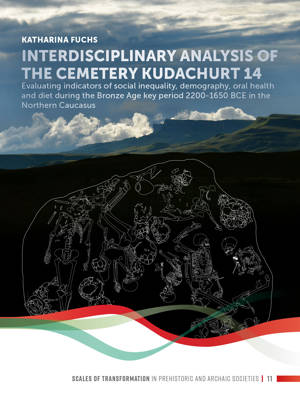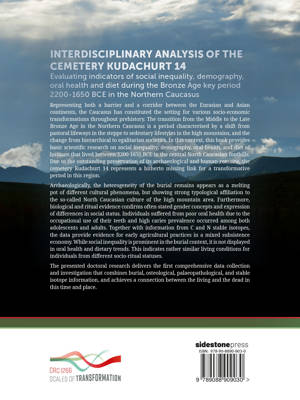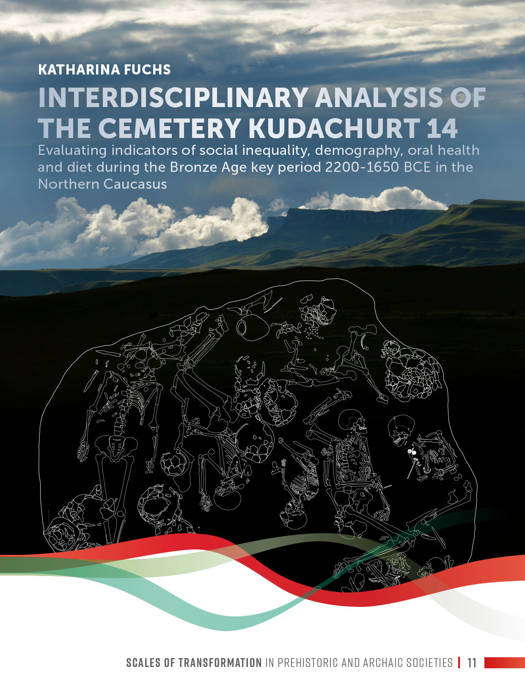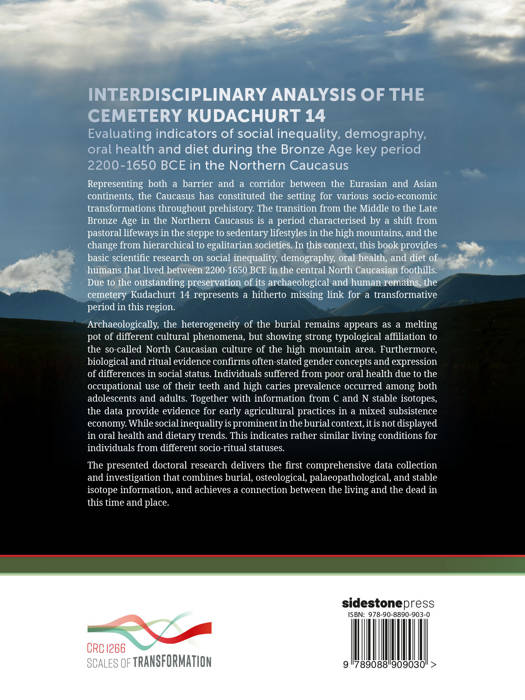
- Retrait gratuit dans votre magasin Club
- 7.000.000 titres dans notre catalogue
- Payer en toute sécurité
- Toujours un magasin près de chez vous
- Retrait gratuit dans votre magasin Club
- 7.000.0000 titres dans notre catalogue
- Payer en toute sécurité
- Toujours un magasin près de chez vous


Interdisciplinary Analysis of the Cemetery 'Kudachurt 14'
Evaluating Indicators of Social Inequality, Demography, Oral Health and Diet During the Bronze Age Key Period 2200-1650 Bce in the Northern Caucasus
Katharina Fuchs
75,00 €
+ 150 points
Format
Description
Representing both a barrier and a corridor between the Eurasian and Asian continents, the Caucasus has constituted the setting for various socio-economic transformations throughout prehistory. The transition from the Middle to the Late Bronze Age in the Northern Caucasus is a period characterised by a shift from pastoral lifeways in the steppe to sedentary lifestyles in the high mountains, and the change from hierarchical to egalitarian societies. In this context, this book provides basic scientific research on social inequality, demography, oral health, and diet of humans that lived between 2200-1650 BCE in the central North Caucasian foothills. Due to the outstanding preservation of its archaeological and human remains, the cemetery Kudachurt 14 represents a hitherto missing link for a transformative period in this region.
Archaeologically, the heterogeneity of the burial remains appears as a melting pot of different cultural phenomena, but showing strong typological affiliation to the so-called North Caucasian culture of the high mountain area. Furthermore, biological and ritual evidence confirms often-stated gender concepts and expression of differences in social status. Individuals suffered from poor oral health due to the occupational use of their teeth and high caries prevalence occurred among both adolescents and adults. Together with information from C and N stable isotopes, the data provide evidence for early agricultural practices in a mixed subsistence economy. While social inequality is prominent in the burial context, it is not displayed in oral health and dietary trends. This indicates rather similar living conditions for individuals from different socio-ritual statuses.
The presented doctoral research delivers the first comprehensive data collection and investigation that combines burial, osteological, palaeopathological, and stable isotope information, and achieves a connection between the living and the dead in this time and place.
Archaeologically, the heterogeneity of the burial remains appears as a melting pot of different cultural phenomena, but showing strong typological affiliation to the so-called North Caucasian culture of the high mountain area. Furthermore, biological and ritual evidence confirms often-stated gender concepts and expression of differences in social status. Individuals suffered from poor oral health due to the occupational use of their teeth and high caries prevalence occurred among both adolescents and adults. Together with information from C and N stable isotopes, the data provide evidence for early agricultural practices in a mixed subsistence economy. While social inequality is prominent in the burial context, it is not displayed in oral health and dietary trends. This indicates rather similar living conditions for individuals from different socio-ritual statuses.
The presented doctoral research delivers the first comprehensive data collection and investigation that combines burial, osteological, palaeopathological, and stable isotope information, and achieves a connection between the living and the dead in this time and place.
Spécifications
Parties prenantes
- Auteur(s) :
- Editeur:
Contenu
- Nombre de pages :
- 440
- Langue:
- Anglais
- Collection :
- Tome:
- n° 11
Caractéristiques
- EAN:
- 9789088909030
- Date de parution :
- 19-11-20
- Format:
- Livre broché
- Format numérique:
- Trade paperback (VS)
- Dimensions :
- 210 mm x 279 mm
- Poids :
- 1467 g

Les avis
Nous publions uniquement les avis qui respectent les conditions requises. Consultez nos conditions pour les avis.







